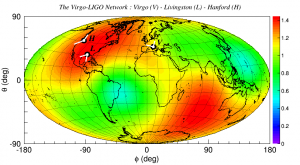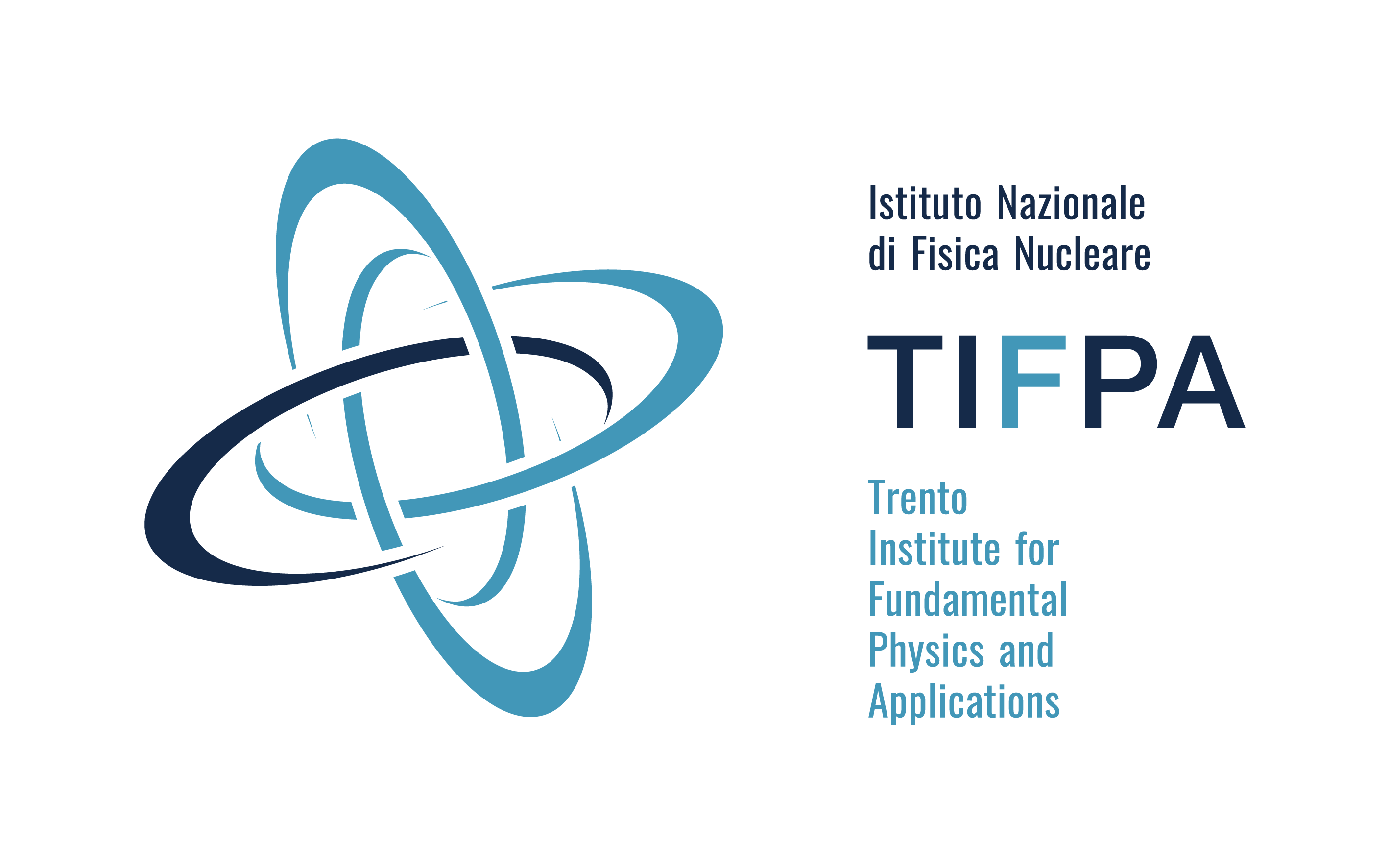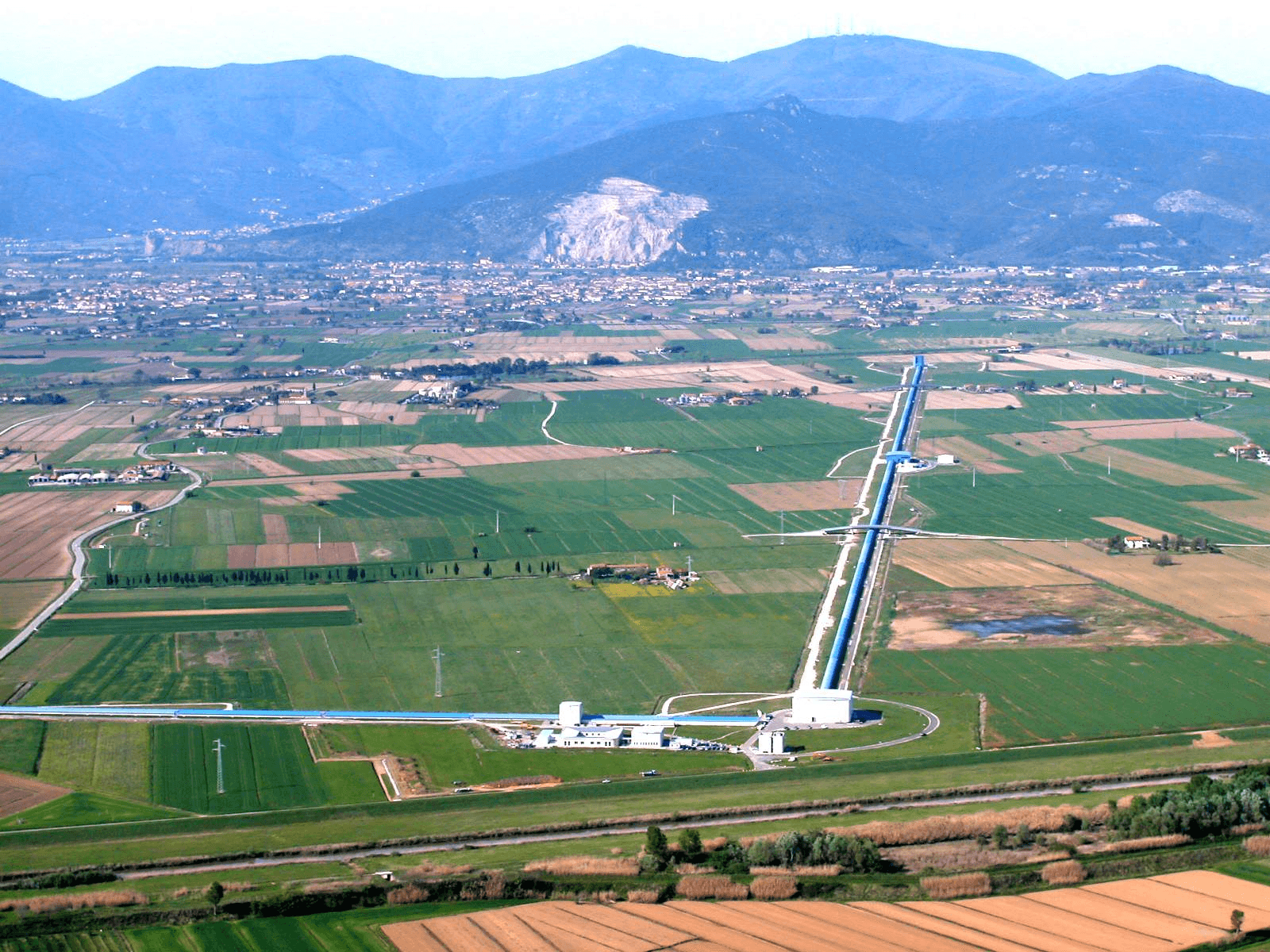VIRGO - gravitational waves detector
A new generation of interferometric detectors is surveying the sky to unveil gravitational waves, a major prediction of Albert Einstein’s General Theory of Relativity. Advanced Virgo near Pisa, Italy will soon join the two Advanced LIGO detectors in the USA. These observations are achieving unprecedented sensitivity and are leading to new discoveries on the Universe. Gravitational waves carry unique information from the core of the most violent astrophysical events and about the nature of gravity.
The Science
Gravitational Waves (GW) are described as ripples in the space-time fabric that propagate at light speed. They have been first predicted by Albert Einstein in 1916, in the context of his General Theory of Relativity. Nevertheless, the theoretical demonstration that GW have indeed a physical reality became mature only in the 1950’s. The most important processes emitting GW are variations of the mass quadrupole moment of the source. The first evidence for the existence of GW came from the accurate monitoring of the orbital parameters of PSR 1913+16, a stellar binary system that is including a pulsar and has been discovered by Hulse and Taylor in 1974: the measured energy loss of this system is fully consistent with the modeled emission of GW. The most energetic emissions of GW are expected from astrophysical sources such as Black Hole or Neutron Star collisions.
GW carry unique information from the core of the most violent astrophysical events and about the nature of gravity itself. They interact so weakly with ordinary matter that they pass through ordinary stars and planets almost unperturbed. Direct detection of GW has been pursued since the 1960’s with different techniques, by chasing the tiny deformations caused by these space-time ripples on an extended body or on a system of test masses. For a fixed GW amplitude, the induced deformation is similar to that produced by a tide, though in the transverse plane with respect to the propagating direction: it causes larger effects the larger the dimension of the sensing system. Large scale detectors up to a few km scale have been realized in the 2000’s, in particular the Virgo detector near Pisa and the two LIGO detectors in the USA.
The Virgo commitment of the Padova-Trento group started with data analysis activities, focusing on the most general searches for transient gravitational waves with LIGO and Virgo detectors. These searches are major discovery tools, since they survey the entire sky and quest simultaneously both for well-known sources classes, as e.g. coalescences of Black Holes binaries, and for less modeled or yet unknown sources. Padova-Trento is a leading group in these searches and pursues them by joint projects with LIGO and GEO groups.
The involvement of Padova-Trento in Virgo instrumental science grew in the years. It comprises investigations of thermal noise in optical coatings, realization of devices for the mechanical suspensions and, from 2013, it focuses on the development of a squeezed light source to be implemented as near-future upgrade of Advanced Virgo. Padova-Trento has a lead role in the latter project, which involves many Virgo groups. This development benefits from the previous experience gained by GEO and LIGO groups, who first demonstrated that the use of squeezed light states can improve the detector sensitivity over a wide frequency range. Since 2016 the group also investigates on properties of thermal noise in thermodynamic states of nonequilibrium.
The expertise of the Padova-Trento group comprises detector design, cryogenics, inertial sensors, displacement transducers, very low noise electronics, mechanical losses and thermal noise, optical cavities, interferometry, detector commissioning and characterization, data analysis.
TEAM
• Involved external institutions: Centre National de la Recherche Scientifique (CNRS), France; Nikhef, the Netherlands; Wigner RCP, Hungary; POLGRAW, Poland; European Gravitational Observatory (EGO), EU
• INFN groups: Firenze, Genova , Napoli, Padova, Perugia, Pisa, Roma 1, Roma 2, TIFPA
More info at VIRGO site.
• Principal Investigator: Fulvio Ricci, University of Roma “La Sapienza”
• INFN Project: CSN II
TIFPA Team
• Padova-Trento Group Leader and Local responsible for TIFPA: Giovanni A. Prodi, TIFPA-INFN and Università di Trento
• Involved TIFPA people: Nicola De Lillo, Matteo Di Giovanni, Matteo Leonardi, Shubhanshu Tiwari, Maria Concetta Tringali, Michele Valentini
Images

aerial view of the VIRGO site

Map of the sensitivity of the Gravitational Wave network of detectors (white marks in the map)

Example of gravitational wave transient as seen by the cWB analysis of the Padova-Trento group



